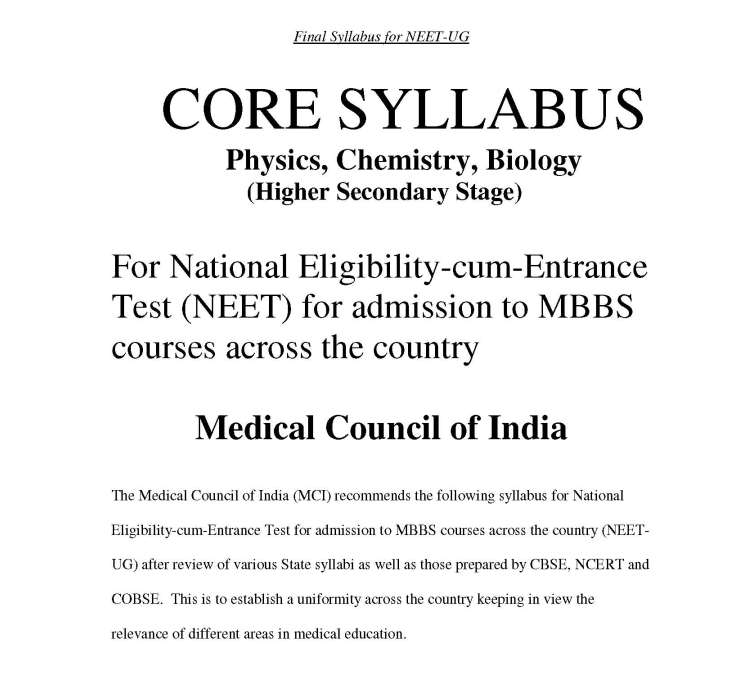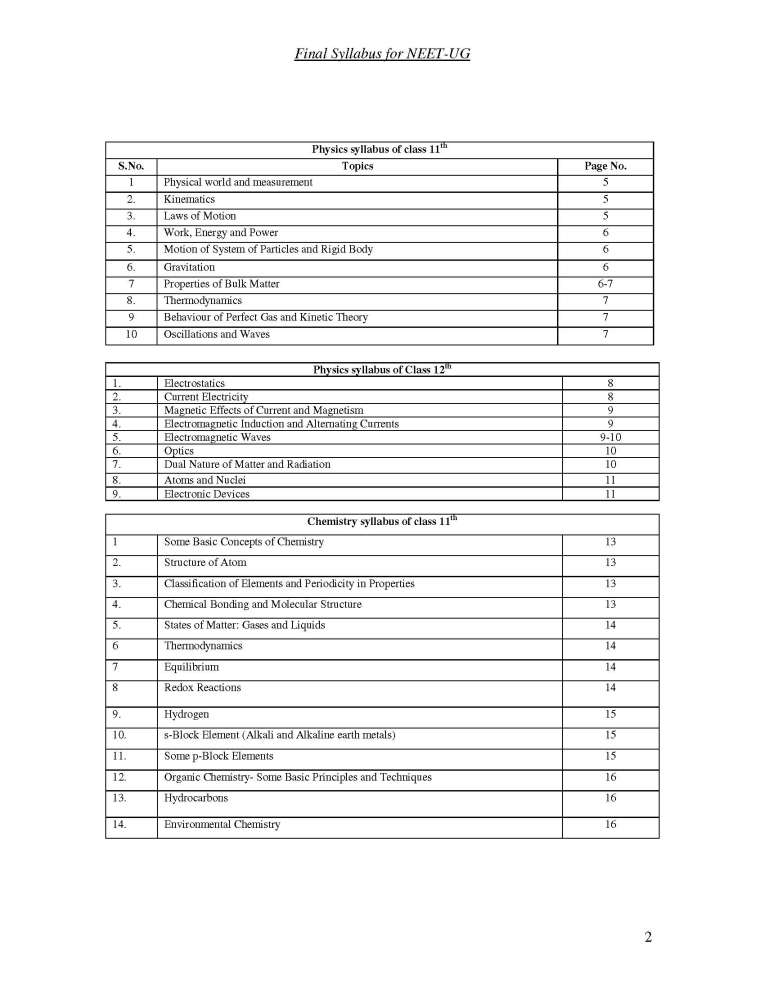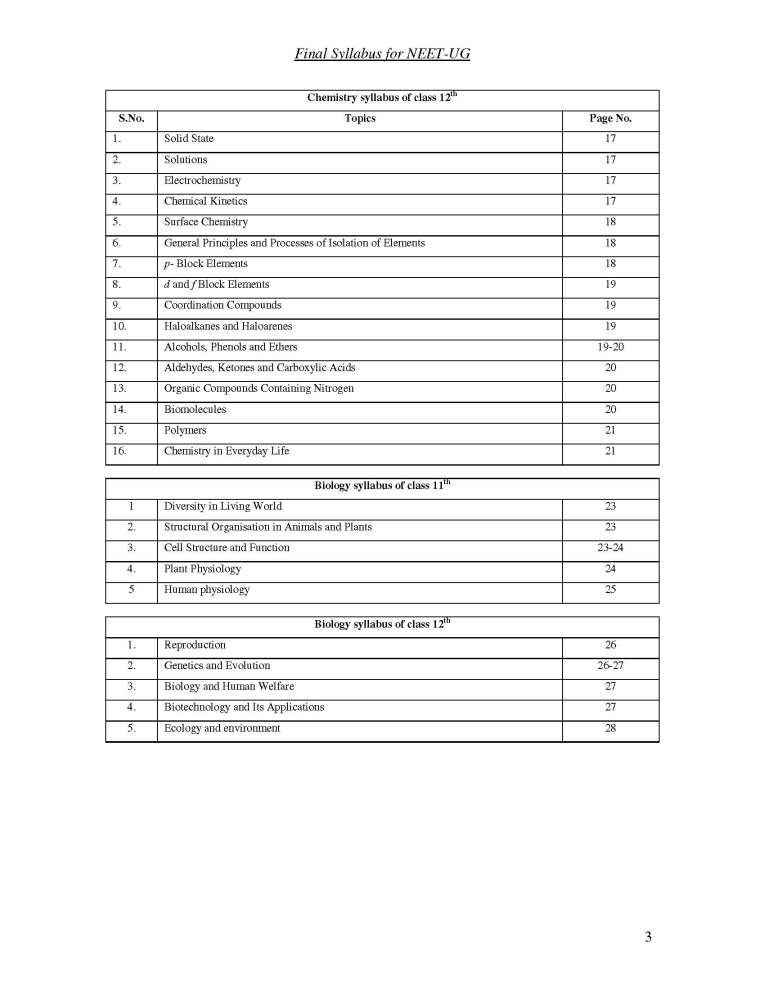|
#3
25th May 2020, 03:34 PM
| |||
| |||
| Re: Syllabus of AMU MBBS
The syllabus for AMU Bachelor of Medicine and Bachelor of Surgery (MBBS) Entrance Exam, now replaced with National Eligibility cum Entrance Test (NEET) is as follow: PHYSICS UNIT I: Physical World and Measurement • Physics: Scope and excitement; nature of physical laws; Physics, technology and society. • Need for measurement: Units of measurement; systems of units; SI units, fundamental and derived units. Length, mass and time measurements; accuracy and precision of measuring instruments; errors in measurement; significant figures. • Dimensions of physical quantities, dimensional analysis and its applications. UNIT II: Kinematics • Frame of reference, Motion in a straight line; Position-time graph, speed and velocity. Uniform and non-uniform motion, average speed and instantaneous velocity. Uniformly accelerated motion, velocity-time and position-time graphs, for uniformly accelerated motion (graphical treatment) • Elementary concepts of differentiation and integration for describing motion. Scalar and vector quantities: Position and displacement vectors, general vectors, general vectors and notation, equality of vectors, multiplication of vectors by a real number; addition and subtraction of vectors. Relative velocity. • Unit vectors. Resolution of a vector in a plane-rectangular components. • Scalar and Vector products of Vectors. Motion in a plane. Cases of uniform velocity and uniform acceleration- projectile motion. Uniform circular motion. UNIT III: Laws of Motion • Intuitive concept of force. Inertia, Newton’s first law of motion; momentum and Newton’s second law of motion; impulse; Newton’s third law of motion. Law of conservation of linear momentum and its applications. • Equilibrium of concurrent forces. Static and Kinetic friction, laws of friction, rolling friction, lubrication. • Dynamics of uniform circular motion. Centripetal force, examples of circular motion (vehicle on level circular road, vehicle on banked road). UNIT IV: Work, Energy and Power • Work done by a constant force and variable force; kinetic energy, work-energy theorem, power. • Notion of potential energy, potential energy of a spring, conservative forces; conservation of mechanical energy (kinetic and potential energies); non-conservative forces; motion in a vertical circle, elastic and inelastic collisions in one and two dimensions. UNIT V: Motion of System of Particles and Rigid Body • Centre of mass of a two-particle system, momentum conservation and centre of mass motion. Centre of mass of a rigid body; centre of mass of uniform rod. • Moment of a force,-torque, angular momentum, conservation of angular momentum with some examples. • Equilibrium of rigid bodies, rigid body rotation and equation of rotational motion, comparison of linear and rotational motions; moment of inertia, radius of gyration. Values of M.I. for simple geometrical objects (no derivation). Statement of parallel and perpendicular axes theorems and their applications Syllabus for National Eligibility cum Entrance Test Under Graduate (NEET UG)    |